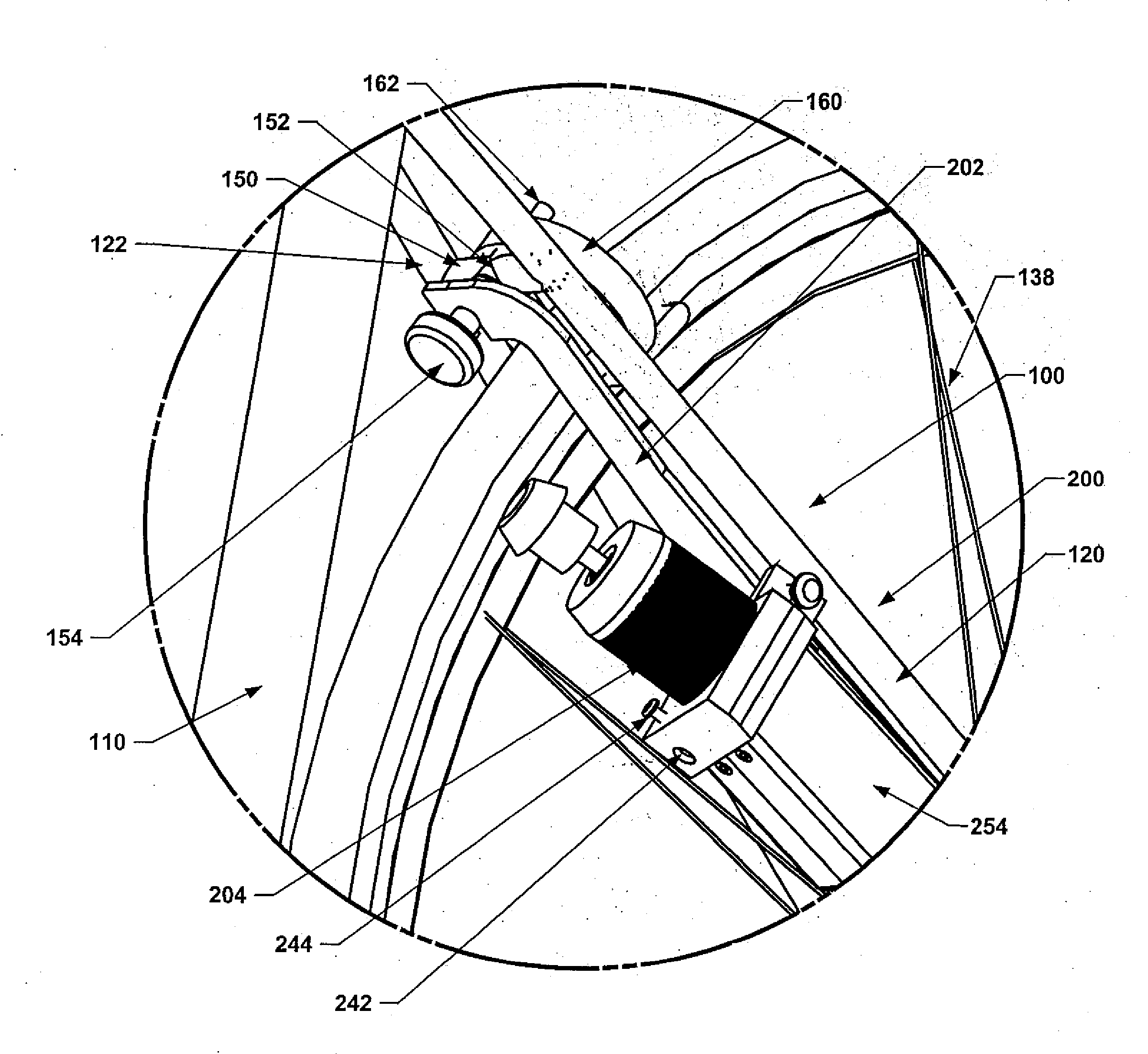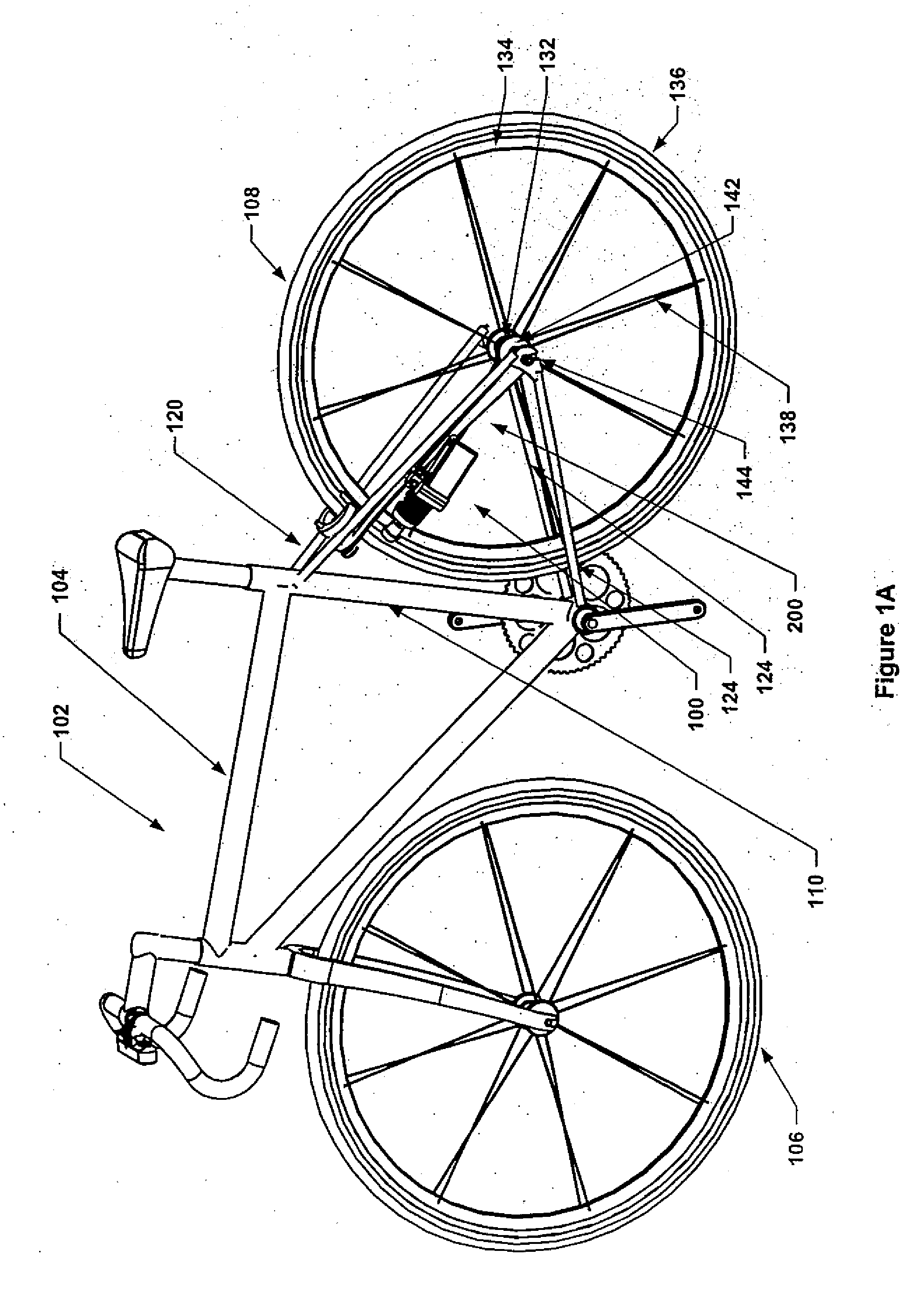Lighting System for a Bicycle
a technology for bicycles and light fixtures, applied in bicycle equipment, lighting and heating apparatus, optical signals, etc., can solve the problems of battery systems, heavy weight, run-time, and cost, and achieve the effect of low weight, high efficiency, and high efficiency of power converters
- Summary
- Abstract
- Description
- Claims
- Application Information
AI Technical Summary
Benefits of technology
Problems solved by technology
Method used
Image
Examples
Embodiment Construction
[0033] Reference will now be made to the drawings wherein like numerals refer to like parts throughout.
[0034]FIG. 1A illustrates one embodiment of a lighting system 100 for a bicycle 102 having a bicycle frame 104 and front and rear wheels 106, 108. FIG. 1B is another side perspective view of the lighting system of FIG 1A. Frame 104 includes a seat post 110 and one or more rear struts 120 extending from seat post 110. Struts 120 support rear wheel mounts 130 for mounting rear wheel 108 to frame 104. Rear struts 120 include upper and lower arms 122, 124 that extend from seat post 110 towards each other to be joined at rear wheel mounts 130. Bicycle 102 may comprise a road bike, mountain bike or any other type of cycle.
[0035] Rear wheel 108 comprises rear axle 132, rear rim 134, and rear tire 136. Rear tire 136 is mounted to rim 134, and rim 134 is attached to axle 132 via a plurality of spokes 138.
[0036] Rear axle 132 includes a shaft 140 that extends through a central portion of ...
PUM
 Login to View More
Login to View More Abstract
Description
Claims
Application Information
 Login to View More
Login to View More - R&D
- Intellectual Property
- Life Sciences
- Materials
- Tech Scout
- Unparalleled Data Quality
- Higher Quality Content
- 60% Fewer Hallucinations
Browse by: Latest US Patents, China's latest patents, Technical Efficacy Thesaurus, Application Domain, Technology Topic, Popular Technical Reports.
© 2025 PatSnap. All rights reserved.Legal|Privacy policy|Modern Slavery Act Transparency Statement|Sitemap|About US| Contact US: help@patsnap.com



